A reminiscence by Joey Skaggs:
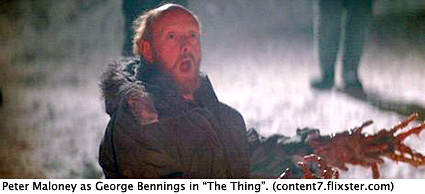
On April 2, 2013, I received an email from my friend Peter Maloney, director, writer, actor and a co-conspirator in my hoaxes, pointing me to a New York Times article about a fake kidnapping. He said,
“It reminds me of the night that you and your cohorts kidnapped Sam Shepard from the Astor Place Theatre on the opening night performance of his plays “˜The Unseen Hand”™ and “˜Forensic and the Navigator”™ (in which I played “˜Forensic”™). I also remember that actor Beeson Carroll wore as his costume in “˜The Unseen Hand”™, your Buffalo skin coat.”
I had caught the news story about the kidnapping on TV a day earlier. I immediately thought it was a prank. A video taken from a surveillance camera showed an abduction with people being thrown into a van on the street. But local police could not find evidence of anyone missing. As it turned out, it was a joke played by friends as a birthday prank.
Stories like this sometimes make it into the Art of the Prank blog, and I considered it. But, being under the weather I wasn”™t highly motivated to do anything with it. Later, thinking about it, I realized how lucky these pranksters were. They could have been shot. They could have been arrested. Any number of bad things potentially could have happened because of this relatively harmless joke.
Peter”™s email and this story inspired me to tell the story of my attempt to kidnap Sam Shepard, a version of which appears in a book by Ellen Ounamo called Sam Shepard: The Life and Work of an American Dreamer (1986, St. Martins Press).
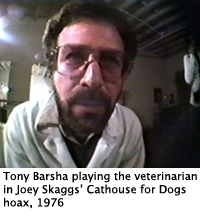 I can”™t find my copy of the book, so I called my friend Tony Barsha in LA. Tony, a director and writer and also frequent co-conspirator, has a vivid recollection of the night. He accompanied me as one of the gangster-kidnappers. Tony found his copy of the book and said that beginning on page 83, producer Albert Poland tells the story. Poland describes me and the incident but leaves out many of the details.
I can”™t find my copy of the book, so I called my friend Tony Barsha in LA. Tony, a director and writer and also frequent co-conspirator, has a vivid recollection of the night. He accompanied me as one of the gangster-kidnappers. Tony found his copy of the book and said that beginning on page 83, producer Albert Poland tells the story. Poland describes me and the incident but leaves out many of the details.
Poland says there were six guys in double-breasted suits carrying violin cases who took part in the abduction scheme. Tony says it was Scot Kelman, Ray Johnson, Victor Eschbach, Bernie Warkentin, himself and me. They were mostly artists, directors and actors living on the Lower East Side in New York. My girlfriend Alexa Ginsburg had made a one-way ticket to AZUSA for me to use as a prop. AZUSA was where “The Unseen Hand” takes place.
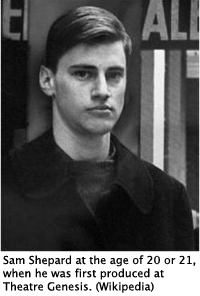 I”™d known Sam since the 60s. The times were intense. We were all passionate about what we believed in and there was much to be outraged about. Some of my writer and actor friends were part of Theater Genesis, which operated in St. Marks Church, a progressive church led by Father Michael Allen. I had met Father Allen in 1965 when he visited my studio at 199 Avenue B while I was constructing a ten foot tall, 200+ pound Crucifixion sculpture. Father Allen had heard that I intended to drag the sculpture through the streets up to Hoving’s Hill, a mound of construction dirt piled up in Tompkins Square Park, as a protest against the hypocrisy of the church, the war in Vietnam and man”™s inhumanity to man. Father Allen graciously offered sanctuary at the church for both the sculpture and me in case something bad happened, which he and I both expected. We were both right.
I”™d known Sam since the 60s. The times were intense. We were all passionate about what we believed in and there was much to be outraged about. Some of my writer and actor friends were part of Theater Genesis, which operated in St. Marks Church, a progressive church led by Father Michael Allen. I had met Father Allen in 1965 when he visited my studio at 199 Avenue B while I was constructing a ten foot tall, 200+ pound Crucifixion sculpture. Father Allen had heard that I intended to drag the sculpture through the streets up to Hoving’s Hill, a mound of construction dirt piled up in Tompkins Square Park, as a protest against the hypocrisy of the church, the war in Vietnam and man”™s inhumanity to man. Father Allen graciously offered sanctuary at the church for both the sculpture and me in case something bad happened, which he and I both expected. We were both right.
Sam”™s two plays were premiering on April 1, 1970 at the Astor Place Theater. Sam had asked me to exhibit my paintings-imaginary abstract landscapes-in the lobby. I was happy to do it. At the time, I was both a fine arts painter and a performance artist. The latter was garnering far more attention as the media were always looking for colorful stories. I apparently had a knack for giving them what they wanted.

I owned a 1937 4-door black Pontiac sedan with running boards, giant fenders and torpedo headlights. It looked like a stereotypical mobster car of the period. I was also into British motorcycles (Matchless, Triumph, BSA) and had a school bus I had gutted and converted into an elegant live-in camper. The latter had been photographed and written up in Penthouse magazine. Back then, it was possible to be a young artist and thrive with very little money. I lived part-time on an old 100 foot x 30 foot former Pennsylvania Railroad barge on the Hudson River-my floating (although it rarely floated) studio. I had acquired it and some other barges very inexpensively with a grand plan to turn the New York waterfront into an East Coast version of Sausalito, with a floating colony of artists. The old barges had been used for hauling cargo and produce up and down the Hudson. After acquiring the first barge, I visited the 79th Street Boat Basin. I pulled up to the office on my motorcycle, dressed in full leathers and told them I had a barge I”™d like to moor. They very impolitely told me to get the fuck out. Pretty much the same thing happened at the East Side Boat Basin in the 20s. Being a downtown snob and never wanting to go north of 14th Street anyway, the notion of parking my barge on Staten Island, which I found out would be possible, and commuting to Manhattan, was out of the question. So I pursued a mooring space on the Jersey side of the Hudson River, still a major compromise.
I found a dilapidated marina operated by Audrey Boyer, a New York real estate manager, who had the lease for the riparian rights within the boundaries of the Township of North Bergen in New Jersey. To get there, you had to go down a dirt road flanked by sumac trees, cross a railroad track and wind through an other worldly experience of trash, derelict boats and crumbling piers leading to the acre of waterfront land. She and some older boat captains who lived there were happy for me to bring the barges and move in. I could also park my school bus and motorcycles. One grisly Dutch captain lived on a barge that had been a speakeasy with a bar and jukebox that played 78 RPM records. He and I often played chess as he told me stories of days gone by. He taught me how to maintain my barge. Across the river was the majestic skyline of Manhattan. Back then, you could take a small motorboat across to the 79th Street boat basin or you could drive through the Lincoln tunnel and get to the city in about 15 minutes.
The Hudson River, which was carved out by glaciers millions of years ago, travels at two speeds–faster on the Manhattan side and slower on the New Jersey side where sediment is deposited. This was convenient for us living on barges and old boats, as they often leaked and would settle on the bottom of the river. Our living and workspace would still be above the high tide level. If we had to move a barge to accommodate another one coming in, since the community grew after I promoted it in the Village Voice (in hindsight bringing unwanted attention to the whole thing), we would start the bilge pumps as the tide was going out and start caulking the seams. These boats were made of giant wooden timbers. Hopefully, when the tide came back in, you”™d have sealed enough leaks and pumped enough water out, that the incoming tide would literally pop the barge off the Hudson”™s muddy bottom and you”™d be floating again. Then you could attach a motorboat to the barge and pull or push it around to make space. It was a dangerous maneuver as you had to fight the currents and hope the powerboat was strong enough to do it. This was reckless and primitive living, but so was illegal loft living south of Houston at the time. I had grown tired of taking a raw space, installing a bathroom and kitchen, sanding the floor, painting everything, and making the building secure only to become vulnerable to inspectors and duplicitous landlords looking to jack up the rent.
This idyllic waterfront scenario didn”™t last as long as I wanted it to because the then mayor of the town, Angelo Sarrubi had other plans for the waterfront. Sarrubi, who also owned a construction company, had his office up on the hill above the derelict marina. One day he looked down and discovered that “hippies”, as we were called in the local newspaper, had invaded the township. On December 19, 1969, the front page of the Hudson Dispatch ran an article saying, “Hippie or Artist – you”™ve got to go. That”™s the message from the North Bergen township “˜establishment”¦”™” Sarrubi didn”™t admit it at the time, but he had plans to build a multi-million dollar marina. Problem was he didn”™t have the lease on the land or the water rights and we were in his way. He was determined to get rid of us and he did.
Mayor Sarrubi was later indicted on a number of corruption charges. But, I and numerous other houseboat owners had had enough harassment and we moved. Some moved their barges further south and some moved to Staten Island. I eventually moved to a rural farm in Upstate New York and bought an old abandoned Opera House, which I donated to a group of community organizers who agreed to bring it back to life. But these are other tales for another time.
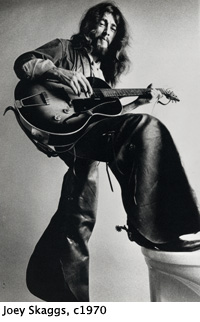 Back to kidnapping Sam Shepard. Love and romance can mean different things at different stages of one”™s life. Looking back, it was total carnage. A war zone. There were bloody and dismembered emotions everywhere, the results of non-committed sex during and in between committed relationships. We treated relationships as if we were juggling balls. You would walk into a bar like St. Adrian”™s, look around, and see those you had had sex with and those who were new to the scene. It was impossible to put notches on your belt because there would be nothing left to hold up your pants. As part of the radical, fuck-the-establishment, testosterone driven art scene, I cut an imposing figure decked out in a full length buffalo coat, southwest Indian hat, long hair and cowboy boots. I wasn”™t looking for love in all the wrong places. I wasn”™t looking for love at all. And, I wasn”™t alone. Back then, my doctor would just automatically pull out the Penicillin when I or my friends went to see him. It was either a non-specific urinary infection or gonorrhea. He would top off the visit with a shot of B12.
Back to kidnapping Sam Shepard. Love and romance can mean different things at different stages of one”™s life. Looking back, it was total carnage. A war zone. There were bloody and dismembered emotions everywhere, the results of non-committed sex during and in between committed relationships. We treated relationships as if we were juggling balls. You would walk into a bar like St. Adrian”™s, look around, and see those you had had sex with and those who were new to the scene. It was impossible to put notches on your belt because there would be nothing left to hold up your pants. As part of the radical, fuck-the-establishment, testosterone driven art scene, I cut an imposing figure decked out in a full length buffalo coat, southwest Indian hat, long hair and cowboy boots. I wasn”™t looking for love in all the wrong places. I wasn”™t looking for love at all. And, I wasn”™t alone. Back then, my doctor would just automatically pull out the Penicillin when I or my friends went to see him. It was either a non-specific urinary infection or gonorrhea. He would top off the visit with a shot of B12.
It was surreal and heady for my friends and I to experience media attention resulting from our notoriety. My thinking, shared by my fellow kidnappers, was that all of Sam”™s recent publicity was inflating his ego. We believed he was buying into the accolades of the status quo (i.e., he was becoming marketable and successful), and we wanted to “rescue” him. The idea was that we would kidnap Sam, take him up to the Port Authority and let him go with a one-way ticket to AZUSA. Why we thought this was funny or would work without any negative consequences is probably the same reason the recent ill-fated fake kidnapping idea was hatched. We didn”™t give a shit about consequences.
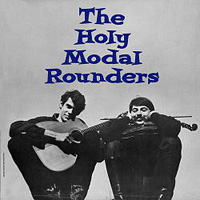 At the opening night party in the lobby of the theater, Sam was playing drums with the Holy Modal Rounders band, Peter Stampfel and Steve Weber. I, wearing a zoot suit and carrying a violin case, supposedly with a Tomy gun inside, burst into the theater with my friends carrying fake guns. Sam saw us coming. O-lan Jones, his girlfriend, started screaming. Tony Barsha thought the plan was backfiring because Sam was paranoid believing Tony was really out to cause him harm. O-lan had recently been with Tony but was now with Sam.
At the opening night party in the lobby of the theater, Sam was playing drums with the Holy Modal Rounders band, Peter Stampfel and Steve Weber. I, wearing a zoot suit and carrying a violin case, supposedly with a Tomy gun inside, burst into the theater with my friends carrying fake guns. Sam saw us coming. O-lan Jones, his girlfriend, started screaming. Tony Barsha thought the plan was backfiring because Sam was paranoid believing Tony was really out to cause him harm. O-lan had recently been with Tony but was now with Sam.
As we went to grab him, Sam started throwing fists, swinging wildly and yelling. The crowd erupted. We decided this isn”™t working, we”™d better get out of here. So, we made a hasty retreat, jumped into the waiting car and took off, laughing our asses off. Sam and everyone else did not think it was funny. In retrospect, can you blame them? The cosmic and probably unintentional payback was that Sam, Albert Poland and the costume department had taken the gorgeous buffalo coat I had lent them as a prop for Beeson Carroll to wear, ripped out the inner lining and shredded the skin to make it look like it was tattered. They returned it to me when the play”™s run was over.
I”™m sure Sam and O-lan got over it quicker than I did. I really loved that buffalo coat. There”™s a long story behind that as well.
Back to the barges. During my brief investigation of the history of the Hudson River while I was buying the barges, I thought I would do an environmental art piece. I found a company called Gusmer Coatings in Woodbridge, New Jersey that did liquid spray infusion of foam. Using two hoses with one connecting nozzle, they would spray two chemicals simultaneously and create hardened foam. It was like a liquid spray urethane foam that solidified in seconds. I wanted to build a gigantic armature out of wood on top of a barge, cover it with canvas and spray that with this white foam. It would be hollow on the inside but appear from the outside to be the tip of a giant iceberg. I figured I could do it fairly inexpensively. I could have a party inside as it was towed down the Hudson, let everyone off, and then have it towed out to sea and set adrift. I imagined it would be reported as a drifting iceberg and would get some media attention. Of course, I didn’t take into consideration that another boat might crash into it or that I”™d most likely get arrested. Those would have been minor details.
 I”™d heard of an art collector by the name of Scull, a multi-millionaire who owned a fleet of taxicabs in New York. Andy Warhol had done a portrait of his wife. He was a Pop art collector and an art patron. So I figured, here”™s my sponsor. I miraculously reached him and he agreed to meet me for dinner and listen to my pitch. I wish I had a film of his reaction when I told him my plans. Needless to say, Mr. Scull was extremely hesitant to get involved. That was undoubtedly lucky for me.
I”™d heard of an art collector by the name of Scull, a multi-millionaire who owned a fleet of taxicabs in New York. Andy Warhol had done a portrait of his wife. He was a Pop art collector and an art patron. So I figured, here”™s my sponsor. I miraculously reached him and he agreed to meet me for dinner and listen to my pitch. I wish I had a film of his reaction when I told him my plans. Needless to say, Mr. Scull was extremely hesitant to get involved. That was undoubtedly lucky for me.
I share these stories not only because they are close to my heart, but also because they”™re obviously still pertinent, as illustrated by the recent fake attempted kidnapping. The lesson here, as always, is that there are consequences for one”™s actions. And, sometimes failing is your saving grace, the luckiest thing that could have happened to you.
